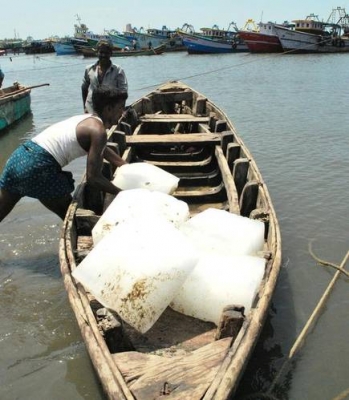The Ice King of the past

What do you do when you want to quench your thirst or satiate your craving to have something cold? You will probably order in some ice cream or cold drinks, or walk up to the nearest store that offers the same. Better still, you might just mix something up at home with your parents and top it up with some fresh ice cubes from your refrigerator.
But before there were refrigerators and freezers, how exactly did people access ice? Agreed, the cold climes bestowed certain places with ice naturally. But what about countries like India, that have predominantly hot weather? It might be hard to imagine now, but ice was considered a luxury product even about two hundred years ago.
The melting problem
The man who thought about this and made ice a more accessible item was American entrepreneur Frederic Tudor. Born in 1783, Tudor went on to show that ice could be marketed and sold, despite the obvious challenges that had to be surmounted.
The idea came to him as a 22-year-old when his brother William remarked that they should harvest ice from their pond in New England and sell it in the Caribbean ports. The thought was so simple, yet remarkable, that Frederic immediately fell in love with it and began working on it.
Hay and sawdust
The problem of tackling melting ice was a big one. Even though Tudor was mocked at for pursuing this idea, he ploughed on, relentlessly. When he couldn’t find any takers to ship his ice, he bought his own brig and went about the task. The ice was packed in hay and even though they survived the voyage, Tudor’s first few journeys were a net loss as the places he shipped them to lacked ice-houses.
Learning from his experience, Tudor ensured that ice-houses were built at locations where the ice was harvested at and also at the ports where they were shipped to. There were also technical learnings along the way as he realised that the use of sawdust instead of hay minimised melting.
Wyeth’s cutter
Tudor started enjoying success, but the true turning point came when he teamed up with one of his suppliers, American inventor Nathaniel Jarvis Wyeth. Wyeth contributed greatly to the ice industry and made it possible for Boston to harvest and sell its ice internationally.
The device that enabled this was a two-bladed horse-drawn ice cutter. Using this, they could convert ice sheets into a grid of blocks (think of a chess board) and these blocks could then be easily pried out with the help of iron bars.
Wyeth’s invention had two-fold advantages mainly. The cumbersome process of harvesting ice using chisels and saws was no longer needed, thus enabling mass production. Secondly, the resulting ice blocks, akin to the giant ice cubes we see even today, allowed for tighter packing during transportation, minimising melting further.
India, the biggest market
One of the greatest tests to Tudor and Wyeth came when the Tudor Ice Company decided to make a shipment to Calcutta in 1833. The insulated hold of the sailing ship Tuscany took in nearly 180 tonnes of freshwater ice in Boston and started its four-month journey in May that year. On September 13, 1833, the consignment reached Calcutta, and even though there were losses, the voyage was largely a success. The crystal-clear ice created ripples across the country and within no time India became one of the biggest markets for Tudor.
Tudor made it abundantly clear that there was a market for his product and by mass-producing it he was able to sell it across the world. He earned the nickname Ice King and his company dominated the industry in the decades that followed.
By the time Tudor died aged 80 in 1864, he was a millionaire and the natural ice industry was at its peak. The advent of refrigerators and freezers, coupled with the manufacture of synthetic or artificial ice, meant that the need to ship natural ice eventually diminished by the end of the 19th Century. The Ice King, however, transformed frozen water from a luxury good to a necessity – one that could not only cool drinks and dishes, but also preserve food and help out in medications.
Picture Credit : Google
Comments
No comments